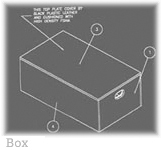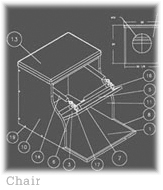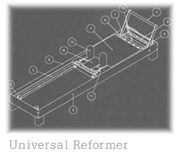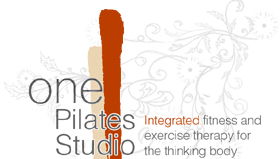pilates
History
The Pilates method of body conditioning was developed by Joseph H. Pilates in the early 1900s. He was born in Germany in 1880.
As a child, Joseph was infected with rheumatic fever and wasn't expected to live beyond six or seven years old.  Influenced by an athletic father and health conscious mother, Joseph learned to swim, dive, and ski, and he eventually overcame his illness with constant physical activity. His interest in rehabilitation began when his mother became lame. He helped her gain strength by manually exercising her muscles so that she became independent of crutches. Later, Joseph Pilates took a job with an orthopedic company that made equipment such as leg braces, which further peaked his interest in this field. He discovered that many clients, shortly after being fitted into a new pair of braces would need a set of smaller braces because their legs were getting thinner due to lack of exercise. He began studying more about the human body and varied forms of exercise including yoga, martial arts, Greek and Roman calisthenics and brought together the best of each discipline to develop his own technique.
Influenced by an athletic father and health conscious mother, Joseph learned to swim, dive, and ski, and he eventually overcame his illness with constant physical activity. His interest in rehabilitation began when his mother became lame. He helped her gain strength by manually exercising her muscles so that she became independent of crutches. Later, Joseph Pilates took a job with an orthopedic company that made equipment such as leg braces, which further peaked his interest in this field. He discovered that many clients, shortly after being fitted into a new pair of braces would need a set of smaller braces because their legs were getting thinner due to lack of exercise. He began studying more about the human body and varied forms of exercise including yoga, martial arts, Greek and Roman calisthenics and brought together the best of each discipline to develop his own technique.  From the Eastern disciplines, Yoga and Zen, come the emphasis on breathing, mental relaxation, and suppleness. Incorporated from the Western discipline of diving, skiing, gymnastics and boxing are aspects of strength and endurance.
From the Eastern disciplines, Yoga and Zen, come the emphasis on breathing, mental relaxation, and suppleness. Incorporated from the Western discipline of diving, skiing, gymnastics and boxing are aspects of strength and endurance.
He further developed his method during World War I when Joseph Pilates was stationed in England as a civilian nurse. He observed that his bedridden patients were getting progressively weaker so he began to exercise each of the manually. Over time, this physical demand prompted him to hook up springs to the hospital beds so that the patients could exercise themselves. Two springs each were attached to the head and foot of the bed so that even paraplegics or amputees could still exercise independently. Although his counterparts thought he was insane, his patients were getting well and not suffering from pneumonia or Spanish influenza like other bed-ridden patients. This innovation was the catalyst for the development of the Universal Reformer exercise apparatus. After his patients were discharged form the hospital, he began building equipment for them to maintain their shape and health. Equipment was later developed and built for "healthy" people.  After the war, Joseph returned to Germany where he continued to develop his work.
After the war, Joseph returned to Germany where he continued to develop his work.
By 1926, Joseph Pilates had moved to the United States where he opened up his own physical fitness studio. His work initially attracted prominent members of both the modern and classical dance community such as George Balachine, Martha Graham, Jerome Robbins, Hanya Holm, and Ruth St. Denis who incorporated the method as part of their training repertoire for overall body conditioning, rehabilitative therapy, injury prevention.




